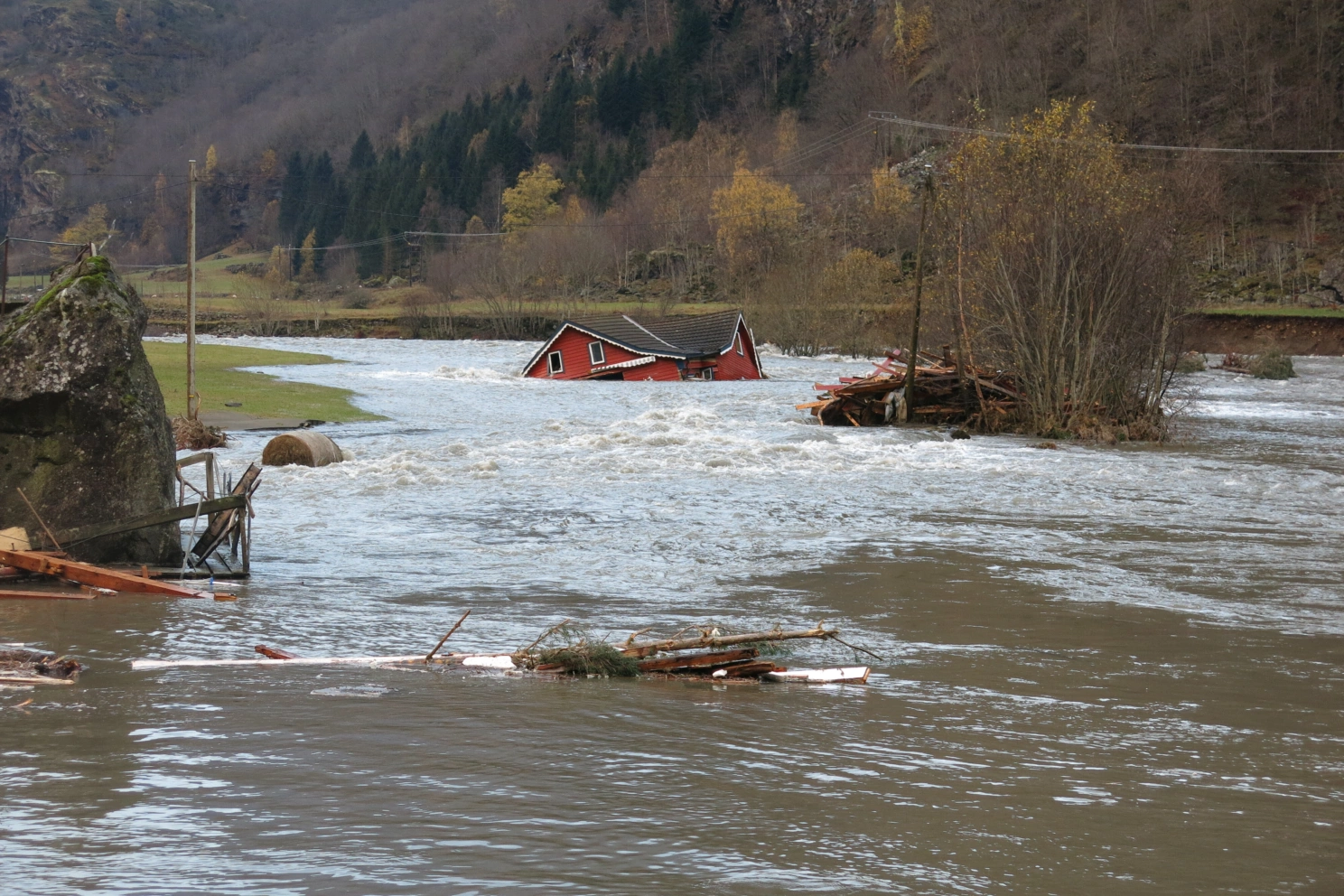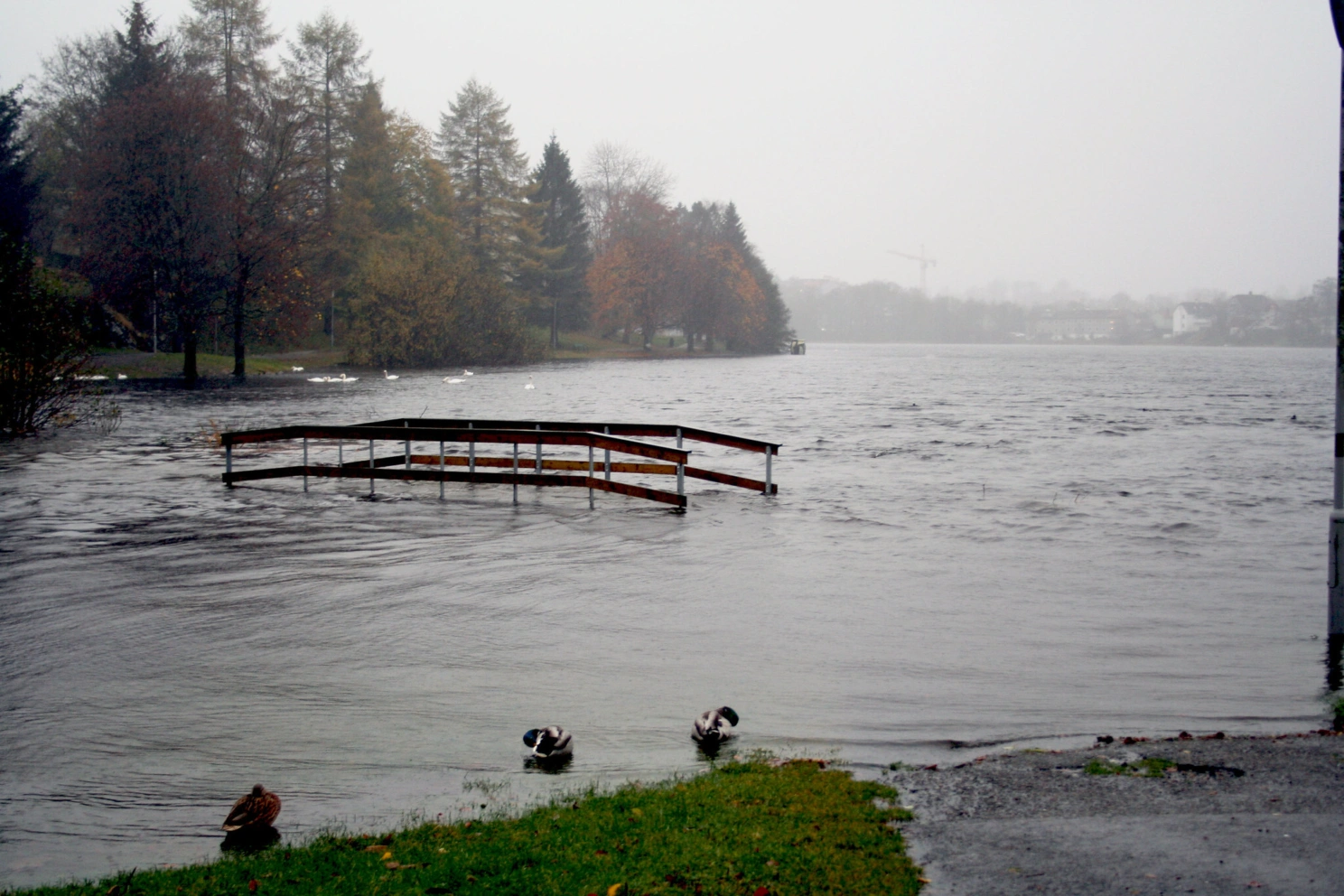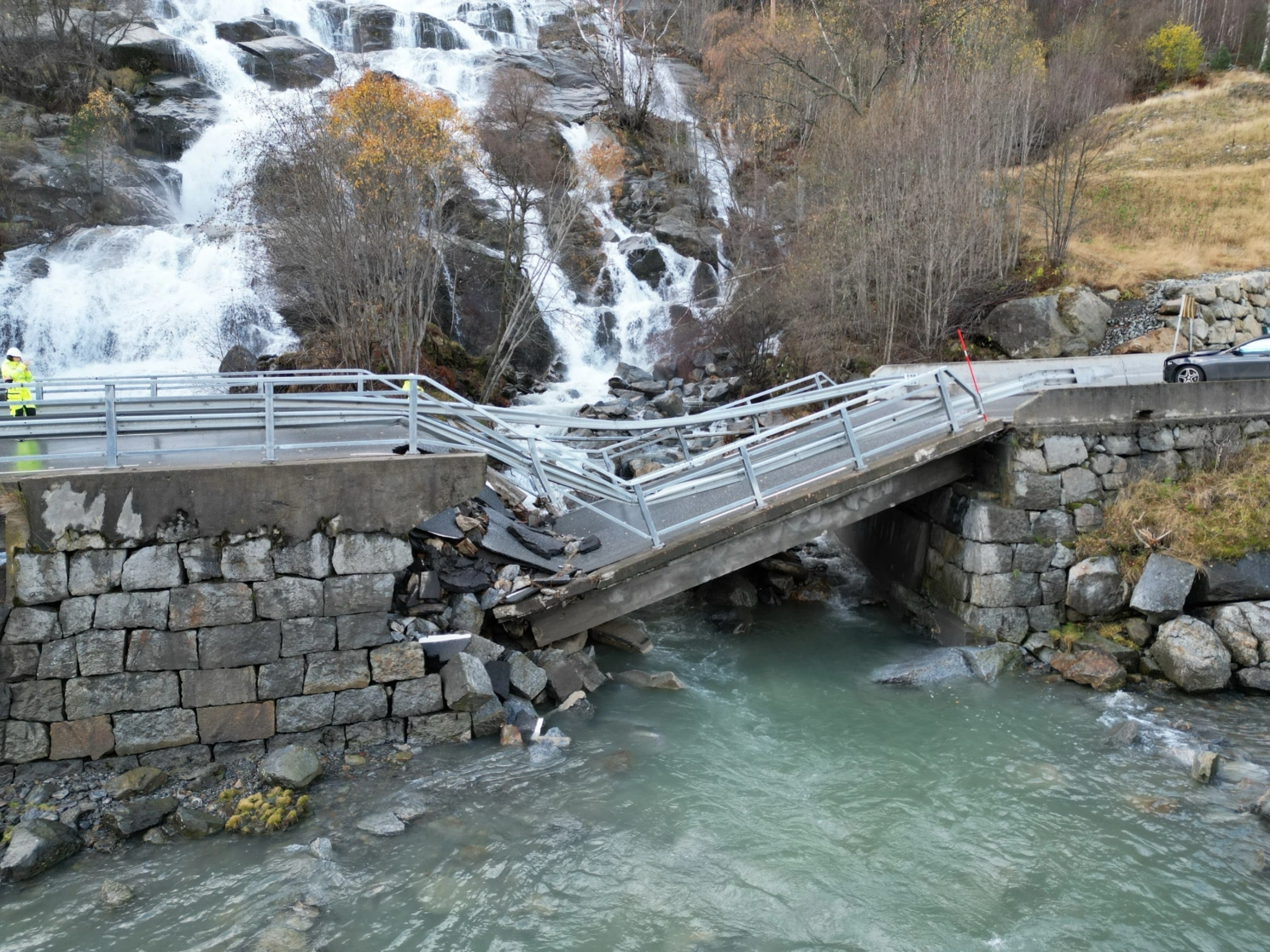Future climate in Norway: More floods, droughts, and less snow
The climate in Norway has already undergone significant changes, and the effects are set to intensify in the coming years. This is demonstrated by a new report from the Norwegian Centre for Climate Services (NCCS).
Publisert 27. October 2025

Severe flood damage in Flåm in 2014. Photo: Svein Arne Vågane, NVE.
To protect lives, properties, and avoid damage to infrastructure, we must adapt to a changing climate, the researchers behind the report suggest.
"The research clearly outlines the major trends: we will experience more rain, more frequent droughts, and less snow. These changes have many serious consequences for both society and nature", says Anita Verpe Dyrrdal, a researcher at the Norwegian Meteorological Institute and head of the Norwegian Centre for Climate Services (NCCS). She is the lead author of the report 'Climate in Norway: Knowledge Base for Climate Adaptation,' which was commissioned by the Norwegian Environment Agency.
The report's conclusions are based on analyses of how weather and climate are expected to change by the end of the century.
"Climate change is occurring here and now. We are already experiencing an increase in extreme weather events, more precipitation, and floods and landslides happening more frequently. The report from the Norwegian Centre for Climate Services (NCCS) shows that this trend will continue, and that these changes will have severe impacts on people if we do not address them. While continuing to reduce greenhouse gas emissions is the most important action we can take to mitigate the effects of climate change, it is also clear that we need to take concrete measures to adapt and better prepare ourselves for a changing climate", says Minister of Climate and Environment Andreas Bjelland Eriksen.
On average, rainfall is expected to increase by 11 percent nationwide towards the end of the century if emissions continue to rise. Eleven percent might not sound like much, but it equates to nearly 50 billion liters of water. More rainfall means we will see more and larger rain-induced floods.
More Extreme Rainfall
"We all remember the extreme weather event 'Hans,' which brought heavy rain over large areas and led to rain-induced flooding in major river systems in Eastern Norway. Nesbyen, which was particularly hard hit, is an example of places that are especially vulnerable when this type of extreme weather strikes. This is something we should expect more of in the future", says Verpe Dyrrdal.
However, one type of rainfall concerns researchers the most.
"Downpours will become even more intense and occur more frequently. This means, among other things, that we will see more flooding in urban areas and along the coast, and more rain-induced floods in small streams and rivers. Tributaries and streams can break out of their normal courses, causing significant damage. Additionally, we expect more landslides and flood-related landslides associated with increased downpours", explains Irene Brox Nilsen, a hydrologist at the Norwegian Water Resources and Energy Directorate (NVE).

A picture from Bergen after heavy rain during "Jakob" in 2024. Photo: Tori Pedersen / Bjerknes Centre for Climate Research
Marked Changes in Winter
Winter in Norway will also look different in the future. Climate researchers have examined how much shorter the ski season will be across the country if we continue with high greenhouse gas emissions.
Tromsø is one of the cities that will see a significantly shorter ski season, defined as days with snow depth of approximately 25 cm or more. From about 4.5 months of ski conditions today, Tromsø will only retain about one month towards the end of the century. A reduction of over 3 months.
"We estimate a shorter ski season almost everywhere in the country. Periods with stable winter conditions will be shorter, and we can expect more melting episodes during winter. The biggest changes are expected in Nordland, Troms, and Finnmark. Winter temperatures in the northernmost counties are expected to increase by 4-5 degrees", says Stephanie Mayer, a climate researcher at NORCE and the Bjerknes Centre for Climate Research.
She adds that there are uncertainties in the model calculations, and the analysis depends on elevation above sea level.
Increased Drought
It's not just winter that will change due to climate change. Summers will become longer, and the risk of prolonged droughts will increase.
"The incidence of drought will increase over large areas, and we should expect drier ground conditions in the summer. Consequences of drought include challenges for water supply, increased likelihood of forest fires, and increased need for agricultural irrigation. This can create challenges for agriculture, especially in Eastern Norway", says Nilsen from NVE.

Edna Bridge in Ullensvang, Vestland, after extreme weather in 2024. Photo: Morten Søreide Iversen, Vestland fylkeskommune
Norwegian Centre for Climate Services (NCCS)
The main purpose of the Norwegian Centre for Climate Services (NCCS) is to provide decision makers in Norway with relevant information regarding climate change for climate adaptation.
NCCS is a collaboration between the Norwegian Meteorological Institute, the Norwegian Water Resources and Energy Directorate, NORCE – Norwegian Research Centre, the Norwegian Mapping Authority, and the Bjerknes Centre for Climate Research. In addition to the partners, the Norwegian Environment Agency is represented on the board.
NCCS produces and communicates climate and hydrological data for use in climate change adaptation and impact studies on the effect of climate change on nature and society. NCCS is involved in many research projects focusing on climate change. Our research is founded on a solid scientific basis and is reproducible. NCCS issues assessment reports about the climate in Norway and Svalbard.
See the webpage here.
Climate Adaptation Becomes More Important
Researchers are clear that climate change is happening now, and that Norway must adapt.
"The less the world manages to cut emissions, the more important climate adaptation becomes. It is much cheaper to prevent damage than it is to clean up after extreme weather events", says Verpe Dyrrdal.
"Municipalities are at the forefront of climate adaptation efforts in Norway. The report provides municipalities with a knowledge base for climate adaptation that can help them along the way", concludes Verpe Dyrrdal.
The first report on "Climate in Norway" was published in 2010, with an update in 2015. This is the third report in the series from the Norwegian Climate Service Center, which is a collaboration between the Norwegian Meteorological Institute, the Norwegian Mapping Authority, NVE, NORCE, and the Bjerknes Centre for Climate Research.